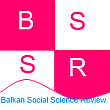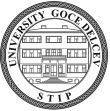EXAMINING RURAL REGIONS IN HUNGARY AFTER EU ACCESSION: PUBLIC MANAGEMENT OF SOME KEY PERFORMANCES (2004-2014)
Abstract
With almost half of the total population (46.85%) of the population living in rural isolated places, Hungary is one of the top rural EU- member countries. The main goal of this research in the paper is the analysis of the ten-year period starting from 2004 until the beginning of the most recently adopted the Hungarian Rural Development Programme (2014-2020). In order to achieve this goal, the paper presents the main functional EU and Hungarian efforts or decisions that pertain to the process of rural development in the country. The accent is put on testing the relationships by performing correlation analysis of the ten socio-economic variables in these regions. They are rural GDP, population density, medical doctors, hospital beds, students, roads, unemployment, mortality, infant mortality and migrations. The research results of the performed correlation analysis points to different conlusions.
Downloads
Permissions
Authors are expected to obtain permission from copyright holders for reproducing any illustrations, tables, figures or lengthy quotations previously published elsewhere. BSSR will not be held accountable for any copyright infringement caused by the authors.
Copyright
The content offered in the BSSR remains the intellectual property of the authors and their publishers respectively. University “Goce Delcev”- Shtip, R. Macedonia and BSSR keap the right to promote and re-publish the texts.



